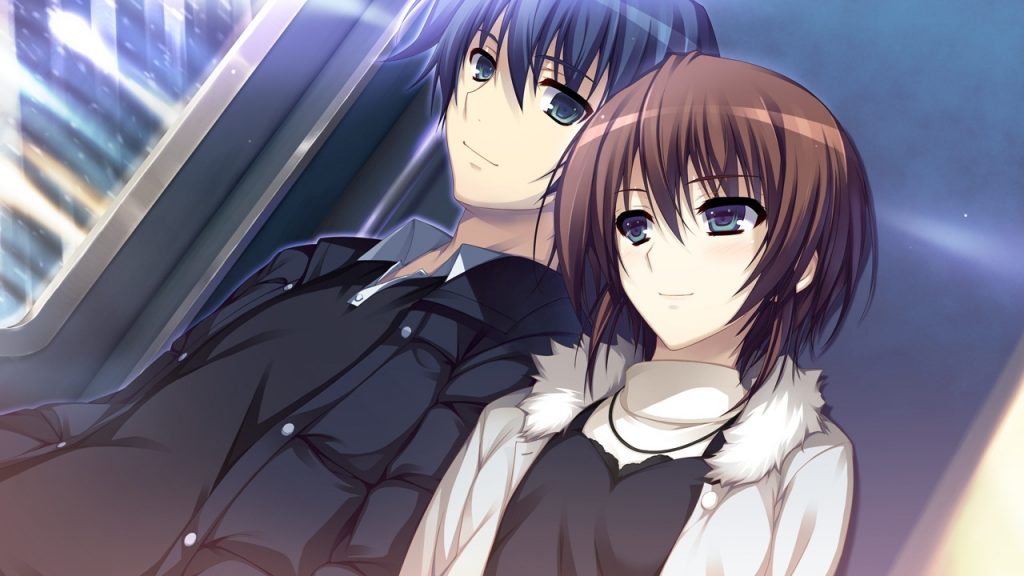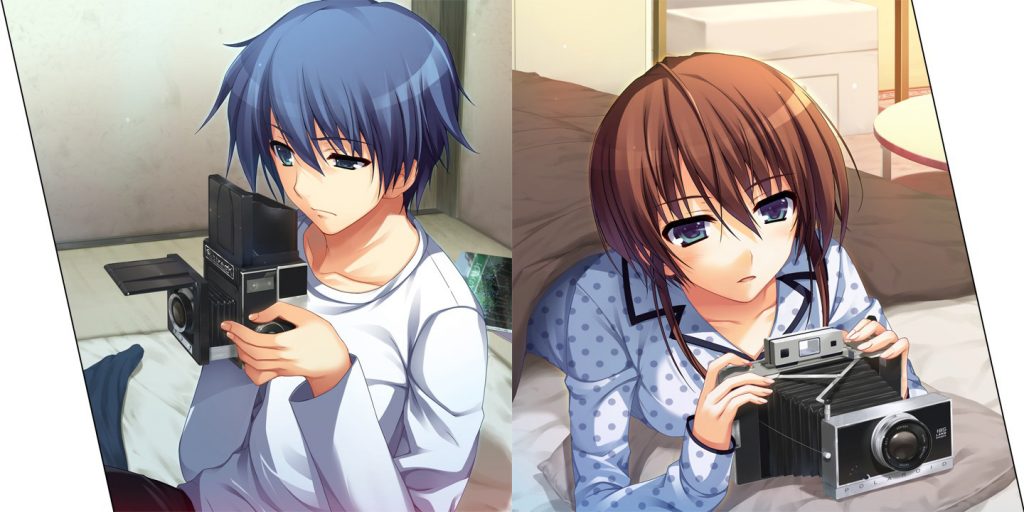
A work with a grand catharsis – profound, but painful.
My original review for this game was written on 8/29/2014 and is on the second page of this review. This review is a revised, edited version. May contain mild conceptual/structural spoilers.
Koi de wa Naku (Koinaku) examines a different type of ‘love’ – not quite romantic love, but something close. It illuminates the nature of this love by investigating human weakness – a method doubtlessly contentious. Koinaku centers on Takafumi, a hetare-esque protagonist, and Yumi – an outwardly confident, but just as passive heroine. Both are unyielding in their ways of thinking, obstinate to the core. They constantly bicker over petty issues, as if that was their raison d’etre. With all that, the work still manages to be likable by the end. After all, the love which it seeks to develop is sincere, and in a way, more realistic than most. This work is not without its flaws, as its first three routes are irksome – wholly unenjoyable. But, the Grand Route provides a great catharsis – where, in an instant, ~25-35 hours of suffering evaporated like rain to hot pavement.
The work is written by Hayakari Takeshi of Gunjou no Sora o Koete fame (a work reputed to be one of the more ‘realistic’ takes on war). He’s a master at writing works which feel grounded. He’s a verbose writer – for better or worse, he draws the reader in through his true-to-life writing. The dialogue is often mundane, at times, listless; Hayakari delves deep into the psychologies of his characters through complex descriptions. The sex scenes served to characterize – constituted of the type of dialogue you would have with someone in real life (i.e. less lovey-dovey talk, more talk about the weather/daily life). For some reason, Koinaku is also written like a primer on photography – with many of the plot events surrounding the subject (e.g. Yumi is a model, Takafumi shoots – common route revolves around filming a movie); there’s even an in-game encyclopedia on cameras and film techniques.

The characters are for lack of a better term – realistic. They act in frequently frustrating, vexating ways – but Hayakari writes them convincingly. On the surface, the plot centers on a love triangle between Norifumi, Yumi, and a third guy. This attribution is misleading, especially when compared to a work like White Album 2 (which actually has a love triangle). Indeed, in Koinaku, there really isn’t ‘love’ outside of the passion the protagonist and the heroine feel toward one another (not necessarily romantic passion though). The side characters serve their purpose well, as they ultimately serve as foils to the main duo – they’re not completely bereft of their own significance, as they shine during the Grand Route. Koinaku subverts convention through its realistic (at times, not-that-likable) characters – but I think the work is all the more better for this (fun fact: despite placing 5th in Scenario & 13th overall in the 2011 Getchu poll, none of its characters placed).

The work’s biggest flaw is its route structure (three alternate routes leading to an unlockable Grand Route) – in each of the lesser routes, the structure of what occurs is generally the same; Takafumi and Yumi bicker relentlessly – plot happens, then eventually, they come to a conclusion. Similar mistakes get repeated in each of the lesser routes, since they’re discrete universes, meaning the reader watches the same disaster unfold three times in substantially similar (but ‘different’) ways. The work would’ve been much better if it were in a ladder-type of format – because at least then, the characters could learn from their mistakes.
Although Koinaku is deeply-flawed on level of enjoyability, I think it’s pretty profound and well worth the read. It develops an interesting profile of love, unlike any that I’ve seen explored in the medium. If nothing else, the work should be read for its ‘Grand Route,’ which is a thing of beauty. In a flash, it pulled me from the nadir of enjoyment to the acme – it unfolded cinematically, in a way that wouldn’t have been as meaningful without the earlier suffering. Years after reading it, I don’t remember the delirium of its read, only its high, memorable points – its purpose and meaning.
[An older, more passionate (but less organized) review of the work is on the following page.]